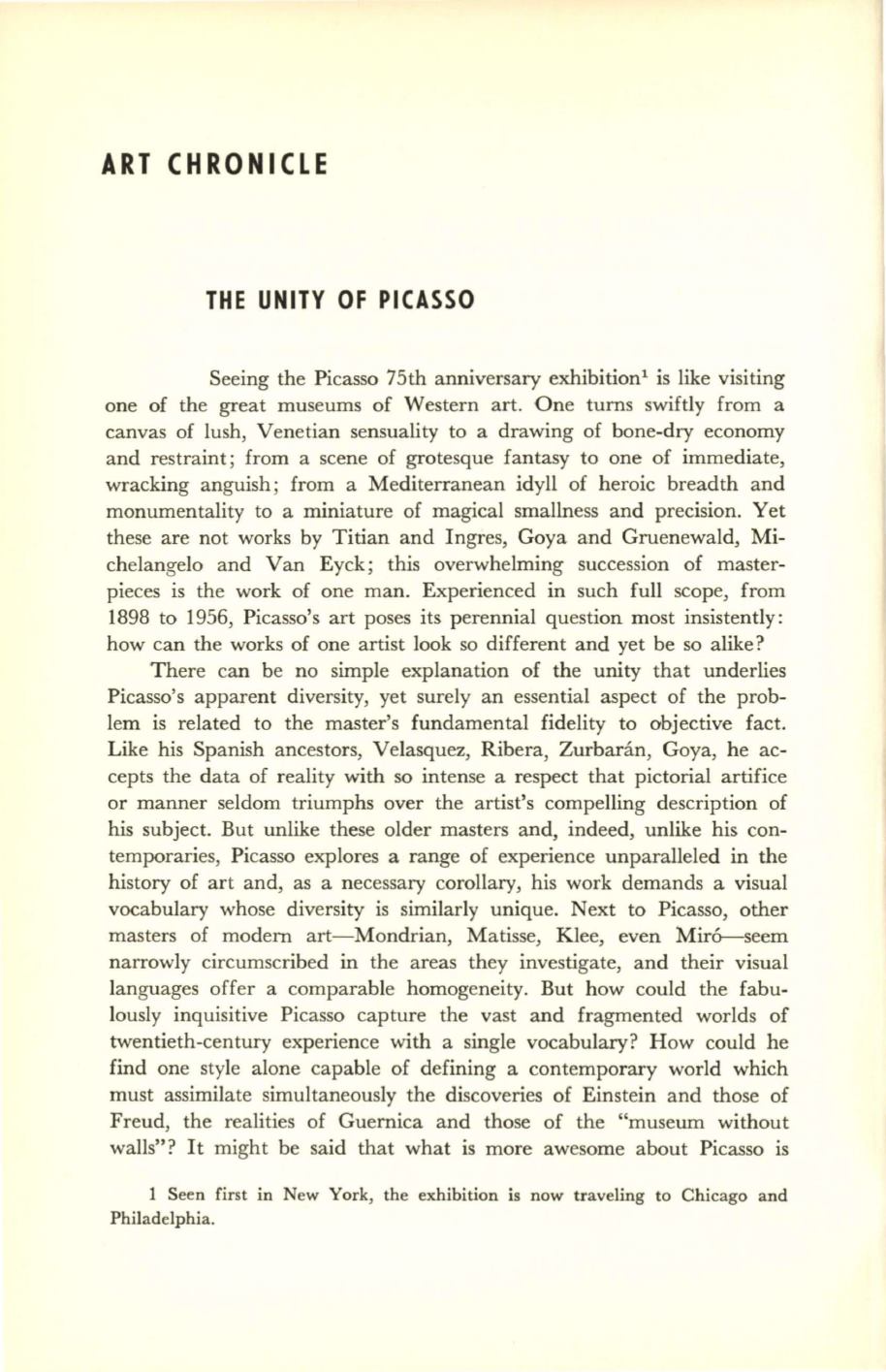
ART CHRONICLE
THE UNITY OF PICASSO
Seeing the Picasso 75th anniversary exhibition! is like visiting
one of the great museums of Western art. One turns swiftly from a
canvas of lush, Venetian sensuality to a drawing of bone-dry economy
and restraint; from a scene of grotesque fantasy to one of immediate,
wracking anguish; from a Mediterranean idyll of heroic breadth and
monumentality to a miniature of magical smallness and precision. Yet
these are not works by Titian and Ingres, Goya and Gruenewald, Mi–
chelangelo and Van Eyck; this overwhelming succession of master–
pieces is the work of one man. Experienced in such full scope, from
1898 to 1956, Picasso's art poses its perennial question most insistently:
how can the works of one artist look so different and yet be so alike?
There can be no simple explanation of the unity that underlies
Picasso's apparent diversity, yet surely an essential aspect of the prob–
lem is related to the master's fundamental fidelity to objective fact.
Like his Spanish ancestors, Velasquez, Ribera, Zurbanin, Goya, he ac–
cepts the data of reality with so intense a respect that pictorial artifice
or manner seldom triumphs over the artist's compelling description of
his subject. But unlike these older masters and, indeed, unlike his con–
temporaries, Picasso explores a range of experience unparalleled in the
history of art and, as a necessary corollary, his work demands a visual
vocabulary whose diversity is similarly unique. Next to Picasso, other
masters of modern art-Mondrian, Matisse, Klee, even Mir6---seem
narrowly circumscribed in the areas they investigate, and their visual
languages offer a comparable homogeneity. But how could the fabu–
lously inquisitive Picasso capture the vast and fragmented worlds of
twentieth-century experience with a single vocabulary? How could he
find one style alone capable of defining a contemporary world which
must assimilate simultaneously the discoveries of Einstein and those of
Freud, the realities of Guernica and those of the "museum without
walls"?
It
might be said that what is more awesome about Picasso is
1 Seen first in New York, the exhibition is now traveling to Chicago and
Philadelphia.


